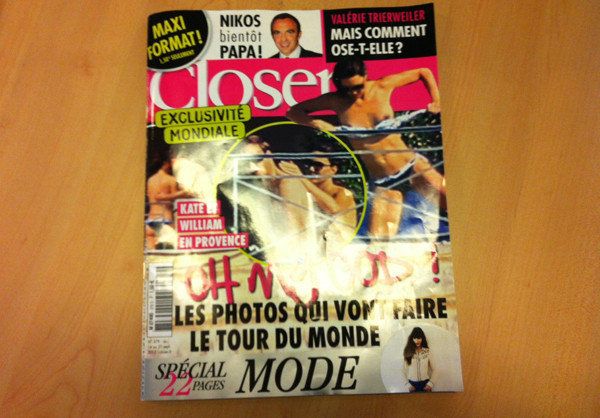
So less than a week after posting some over lengthy thoughts on privacy and public interest laws the issue is back in the news and once again it is a raging debate about images taken of a member of the British Royal Family. Perhaps a more lighthearted approach would have summed it up like the comment left on the post that surely the better headline would have been "Prince Harry and the Pubic Interest." This time the images are not of a member of a member of the Royals.
This time nearly all of the mainstream press are running scared and screaming righteous indignation about anyone who would even thing of publishing the topless photos of the people's Princess-in-waiting take two. After all, there are major differences in the specific issues related to how the images were taken and whether the act of taking them constitutes an invasion of privacy. There are also differences about whether the images can be interpreted as being in the public interest and justifying publication. These are all legitimate debates full of subjectivity on what is right and wrong and objectivity in the form of jurisdictions and privacy laws.
What is similar, however, is that the images are now splashed all over the Web and anyone with an Internet connection and the ability to type (and even misspell) Kate Middleton has already seen them. Closer magazine searches peaked stratospherically in Google yesterday and are already on the wane. The more debate about the rights and wrongs of publishing the images, the better for Closer, and the more palatable the inevitable fine will feel. A nice juicy Royal court case will only bring the magazine back into the public spotlight. It can't be ignored that in a competitive digital media marketplace publishing photos like these are often less about the photos and more about the exposure the publication of the photos will bring the publication. They represent signal in noise and this is a form of meta-journalism tuned into the fickle clicking and trending of the Twitterati and those operating on Facebook time, which is basically every media consumer. Whether or not other magazines in other countries choose to print the photographs on paper is a moot point and not really relevant. The images are, er, out there.
Nothing is going to be easy to work out. Without any enforceable global deterrent regulations every time a privacy boundary is crossed it will spark a relentless drive towards crossing the next boundary until it all collapses in like a privacy supernova, rupturing foundations of the social contract, and not just for the rich or famous. In the opposite corner we find sweeping and ham-fisted attempts at gross censorship like the Communications Data Bill in the UK or Digital Rights Management (DRM) in popular media. If we attempt to erect artificial boundaries in the organics of the Web, the enterprising will just seek the edges and come around like ill-fated Maginot Lines. Like most things, the potential of Internetworking global communications and people creates as many problems as it solves. But seek to solve and address these emergent issues we must, because after all, it is in the public interest.